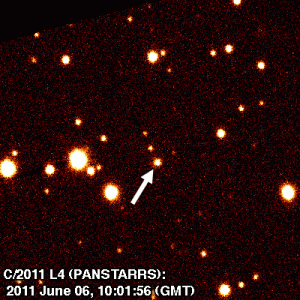New Comet Found with Haleakala Pan-STARRS Telescope
By Wendy Osher
University of Hawai’i (UH) Astronomers have discovered a new distant comet with the help of the Pan-STARRS 1 telescope atop Haleakala on Maui. The announcement was made Thursday by the University of Hawai’i Institute for Astronomy.
UH astronomer Richard Wainscoat confirmed the finding on the night of June 5-6, followed by further confirmation from graduate student Marco Micheli the next night using a telescope on Mauna Kea.
The comet is expected to be visible to the naked eye in early 2013, when calculations show the comet will come within about 30 million miles of the sun—about as far away as Mercury. The comet is currently about 700 million miles from the sun, placing it beyond the orbit of Jupiter.
Astronomers say the comet’s closest approach is anticipated in February or March 2013, when it is expected to be visible low in the western sky after sunset. According to researchers, it will pose no danger to Earth.
Wainscoat said, “The comet has an orbit that is close to parabolic, meaning that this may be the first time it will ever come close to the sun, and that it may never return.”
While comets are usually named after the person who discovered them, this one has been given the name C/2011 L4 (PANSTARRS), because a large team of observers, computer scientists, and astronomers who contributed.
Scientists believe the comet most likely originated in the Oort cloud, a cloud of comet-like objects located in the distant outer solar system. According to the UH Institute for Astronomy, the comet was probably gravitationally disturbed by a distant passing star, sending it on a journey toward the sun.
Scientists hope the finding will provide a unique opportunity to look at material left over from the early formation of the solar system.
*** Supporting information courtesy UH Institute for Astronomy











